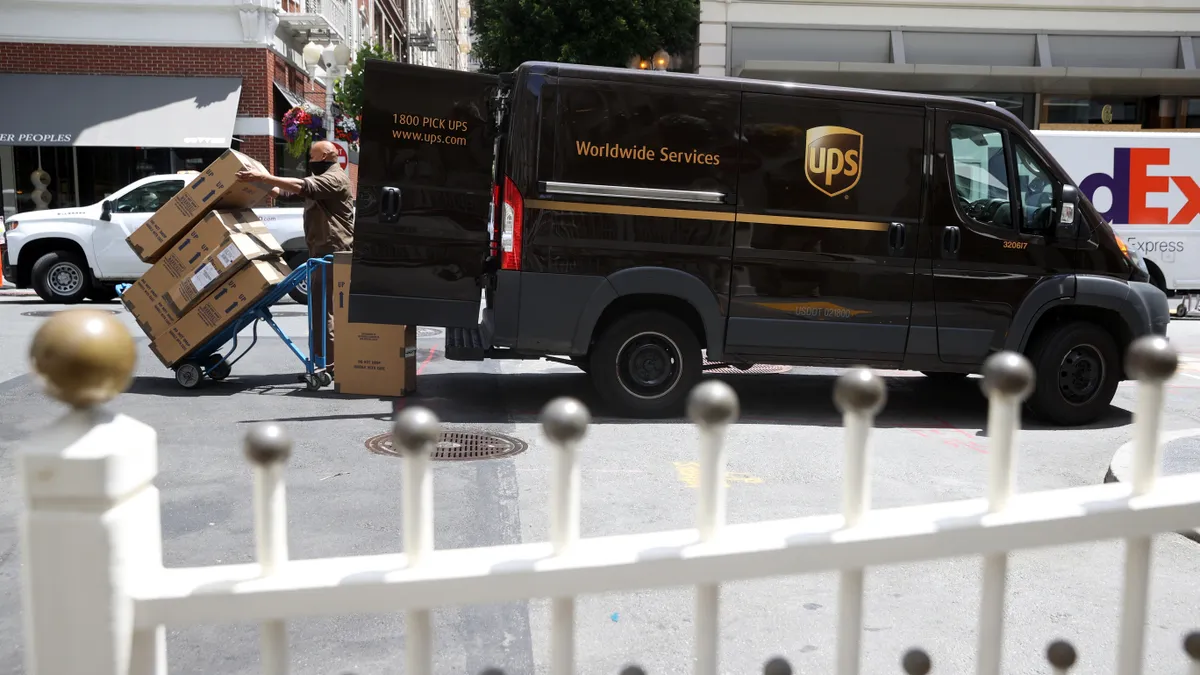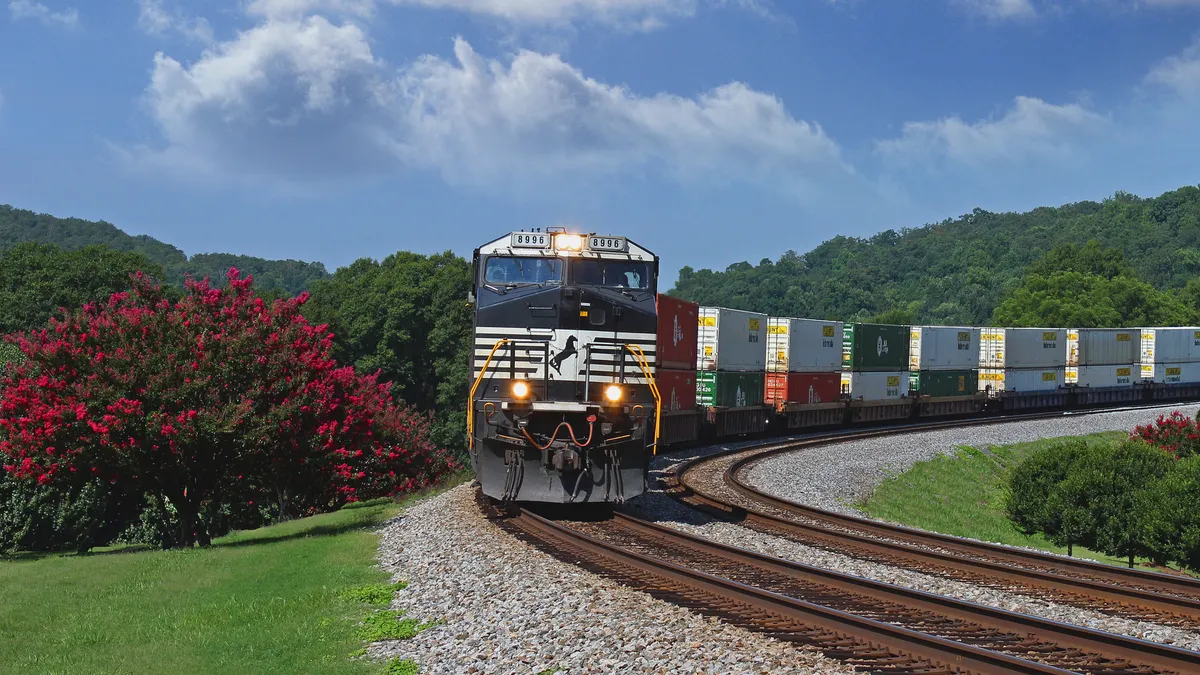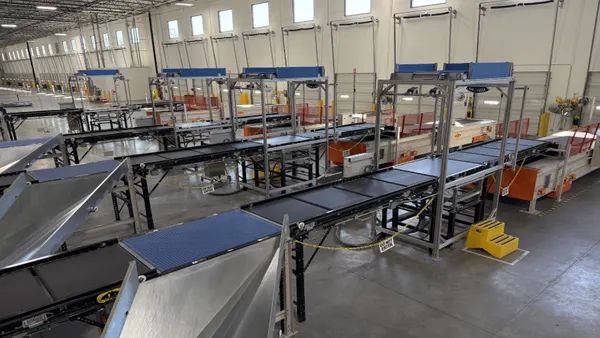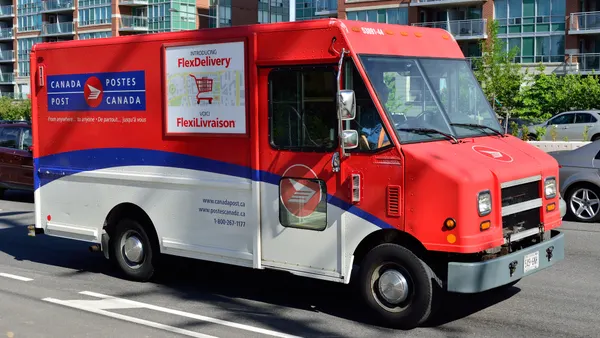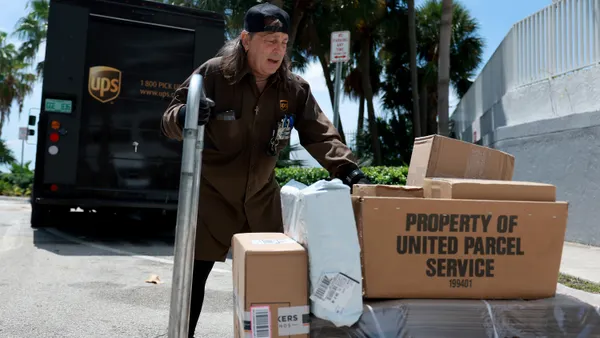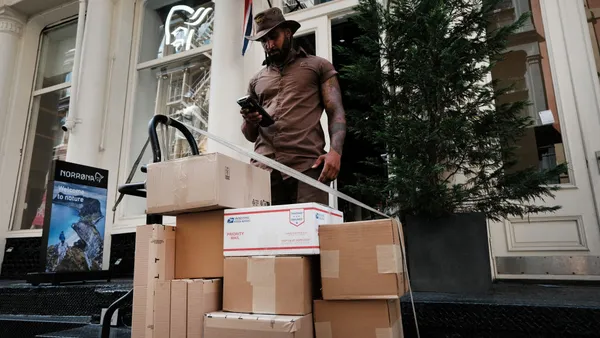Dive Brief:
- UPS is in the midst of a pilot to improve package volume density on driver routes and save on delivery costs, CEO Carol Tomé said on the company's earnings call last week.
- The pilot involves an unnamed, third-party technology company "holding" an order on an order management system until it can match another shipment to the same address. "The virtual hold is only as long as the service level agreement allows, but there's a lot of hours in that service level agreement — nine hours, 12 hours," Tomé said.
- Tomé said the pilot is going live in Q3 with the customer currently participating in it. "We've got nine other customers lined up who are anxious to talk to us about this," she added.
Dive Insight:
For UPS, it pays to deliver more packages in fewer stops. The company estimates the cost it incurs for last-mile delivery of a package to be $5.50, with 60 cents added per additional package.
"Imagine the value that can be released if we improve the density," Tomé said. "So we're going to give some of that value back to our customers."
UPS has pursued better delivery density for years, but it has tried to tackle the issue downstream, rather than upstream when the order is made. This has included encouraging use of UPS Access Point locations, local businesses where customers can receive or drop off packages, and redirecting certain UPS packages destined for Postal Service delivery back to company couriers. But Tomé said those efforts haven't moved the needle.
"So we're like, 'All right, what we're doing isn't working. We've got to go upstream,'" she said. "And when I mean upstream, when you think about e-commerce retailers, their upstream supply chain is from the manufacturer to their warehouse or store. Their upstream supply chain is also their order management system."
As UPS' upstream initiative expands, the company will have to balance efforts to bulk up delivery density with its "better, not bigger" philosophy solidified under Tomé's leadership. UPS’ average daily U.S. volume fell 4% YoY in Q2, with the majority of the reduction tied to home deliveries, as the company pursues more profitable shipments like those in the business-to-business and healthcare segments.
Rival FedEx is also pushing to reduce last mile delivery costs through its "Network 2.0" plan, which includes consolidating pickup and delivery routes run by its separate Express and Ground segments.



